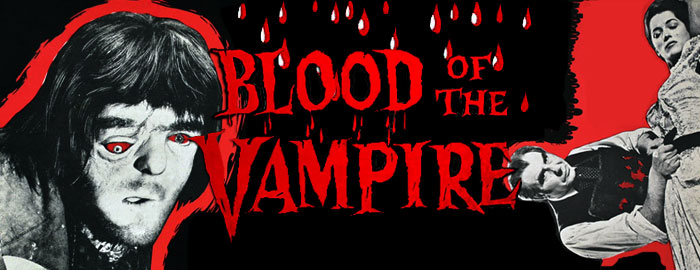
Color, 1958, 87 mins. 24 secs.
Directed by Henry Cass
Starring Donald Wolfit, Vincent Ball, Barbara Shelley, Victor Maddern, William Devlin, Andrew Faulds
Nucleus Films (Blu-ray) (UK RB HD), Scream Factory (Blu-ray) (US RA HD), Artus (Blu-ray & DVD) (France RB/R2 PAL) / WS (1.66:1) (16:9), Dark Sky (DVD) (US R1 NTSC) / WS (1.85:1) (16:9), Simply Media (DVD) (UK R2 PAL)
 switcheroo, Blood of the Vampire was pushed into
switcheroo, Blood of the Vampire was pushed into  production on the heels of the success of Hammer's The Curse of Frankenstein and nabbed the studio's hot new screenwriter, Jimmy Sangster, to pen this with an eye on riding into theaters quickly after Horror of Dracula (or just Dracula). The vampire elements here are a major stretch to put it mildly, even it does open with a bloodsucking accusation, a staking, and a quick appearance by a bat. You do get a lot of blood draining courtesy of a mad scientist though and lots of other Gothic blood and thunder, so audiences didn't seem to really notice. The film was part of a string of Hammer-competing British horror films from Robert S. Baker and Monty Berman, who turned out films like The Flesh and the Fiends, The Crawling Eye, Jack the Ripper, and The Hellfire Club before shifting gears to TV with The Saint. Unlike those other films, this one was shot in vivid, splashy color a la Hammer and took full advantage of the format with a bold, almost surreal aesthetic that was largely obliterated via cruddy film prints and haggard video masters for decades. Even worse, the BBFC took out the shears and omitted the most violent and salacious moments from the film which, apart from a scarce French VHS, were essentially out of reach until a restoration finally reared its head in 2022.
production on the heels of the success of Hammer's The Curse of Frankenstein and nabbed the studio's hot new screenwriter, Jimmy Sangster, to pen this with an eye on riding into theaters quickly after Horror of Dracula (or just Dracula). The vampire elements here are a major stretch to put it mildly, even it does open with a bloodsucking accusation, a staking, and a quick appearance by a bat. You do get a lot of blood draining courtesy of a mad scientist though and lots of other Gothic blood and thunder, so audiences didn't seem to really notice. The film was part of a string of Hammer-competing British horror films from Robert S. Baker and Monty Berman, who turned out films like The Flesh and the Fiends, The Crawling Eye, Jack the Ripper, and The Hellfire Club before shifting gears to TV with The Saint. Unlike those other films, this one was shot in vivid, splashy color a la Hammer and took full advantage of the format with a bold, almost surreal aesthetic that was largely obliterated via cruddy film prints and haggard video masters for decades. Even worse, the BBFC took out the shears and omitted the most violent and salacious moments from the film which, apart from a scarce French VHS, were essentially out of reach until a restoration finally reared its head in 2022. 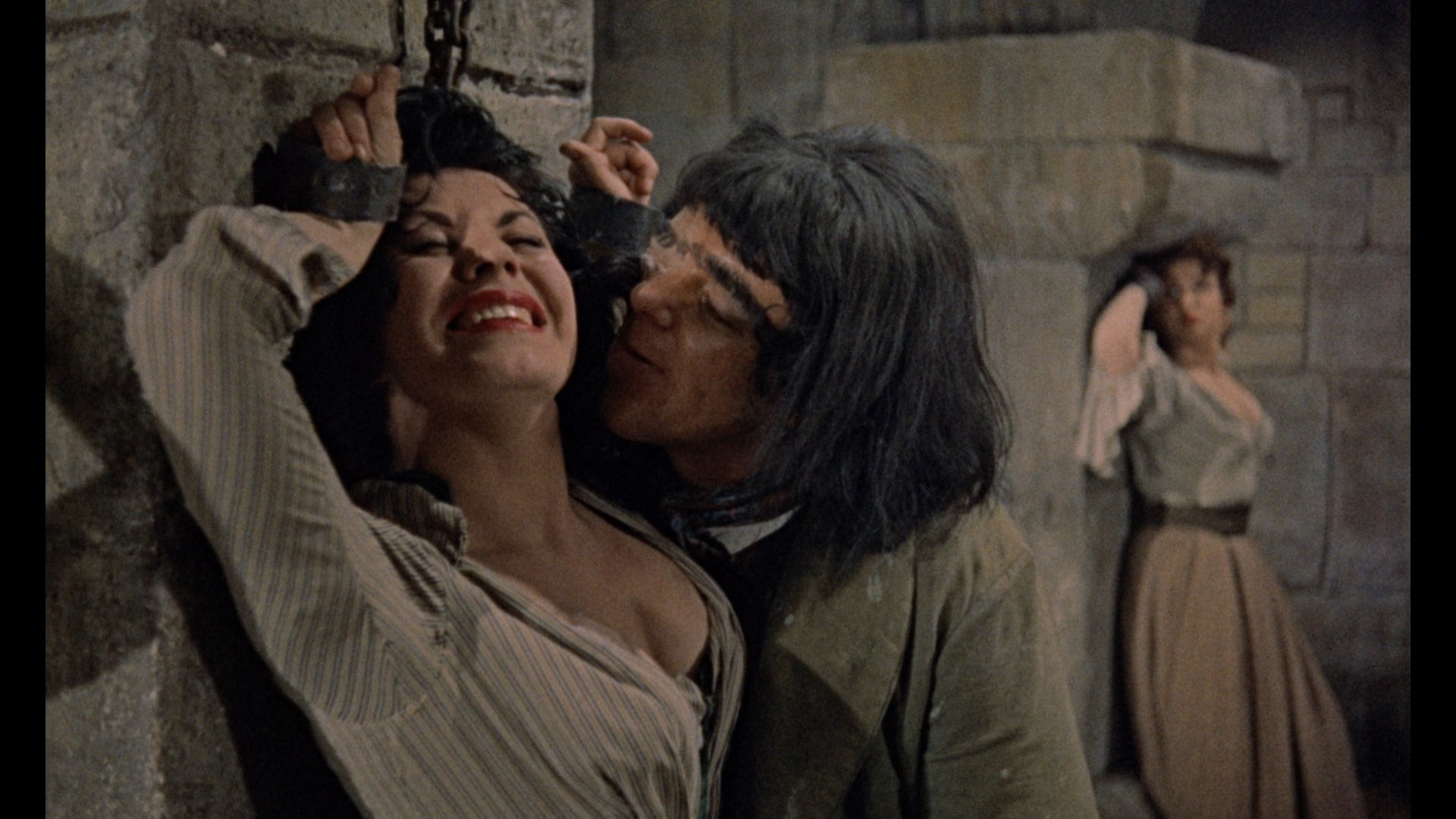 rechristened Dr. Callistratus (Wolfit) is working at an asylum where, through various underhanded
rechristened Dr. Callistratus (Wolfit) is working at an asylum where, through various underhanded 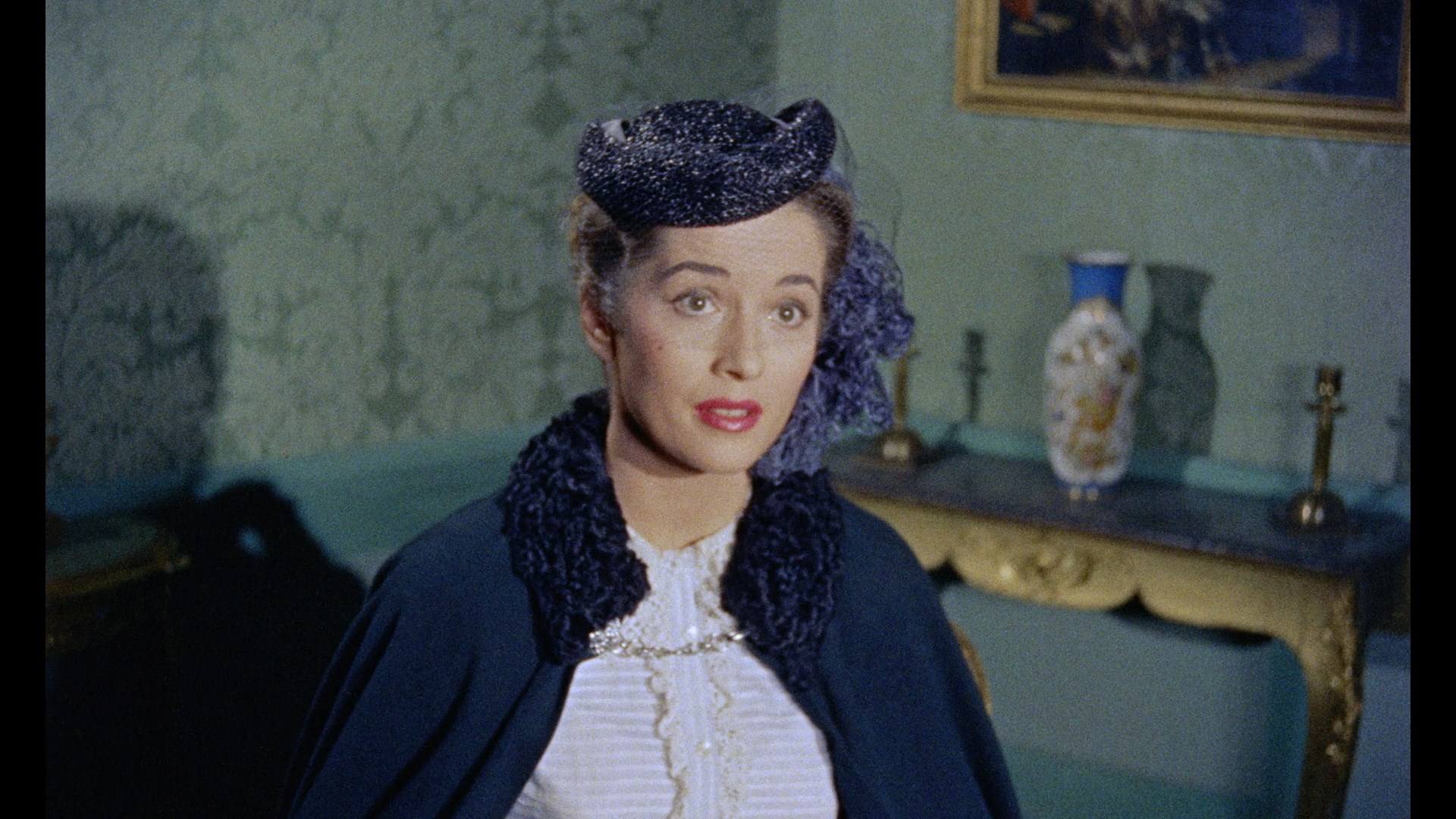 machinations, young Dr. John Pierre (Ball) is sent as punishment for performing a fatal blood transfusion. John's fiancée, Madeleine (Shelley), scrambles to find a way to save him as he ends up working for Callistratus on a string of highly unorthodox blood experiments with the inmates. Eventually Madeleine is putting her own life on the line by going undercover, only to discover the full, horrific extent of Callistratus' sadistic handiwork.
machinations, young Dr. John Pierre (Ball) is sent as punishment for performing a fatal blood transfusion. John's fiancée, Madeleine (Shelley), scrambles to find a way to save him as he ends up working for Callistratus on a string of highly unorthodox blood experiments with the inmates. Eventually Madeleine is putting her own life on the line by going undercover, only to discover the full, horrific extent of Callistratus' sadistic handiwork. 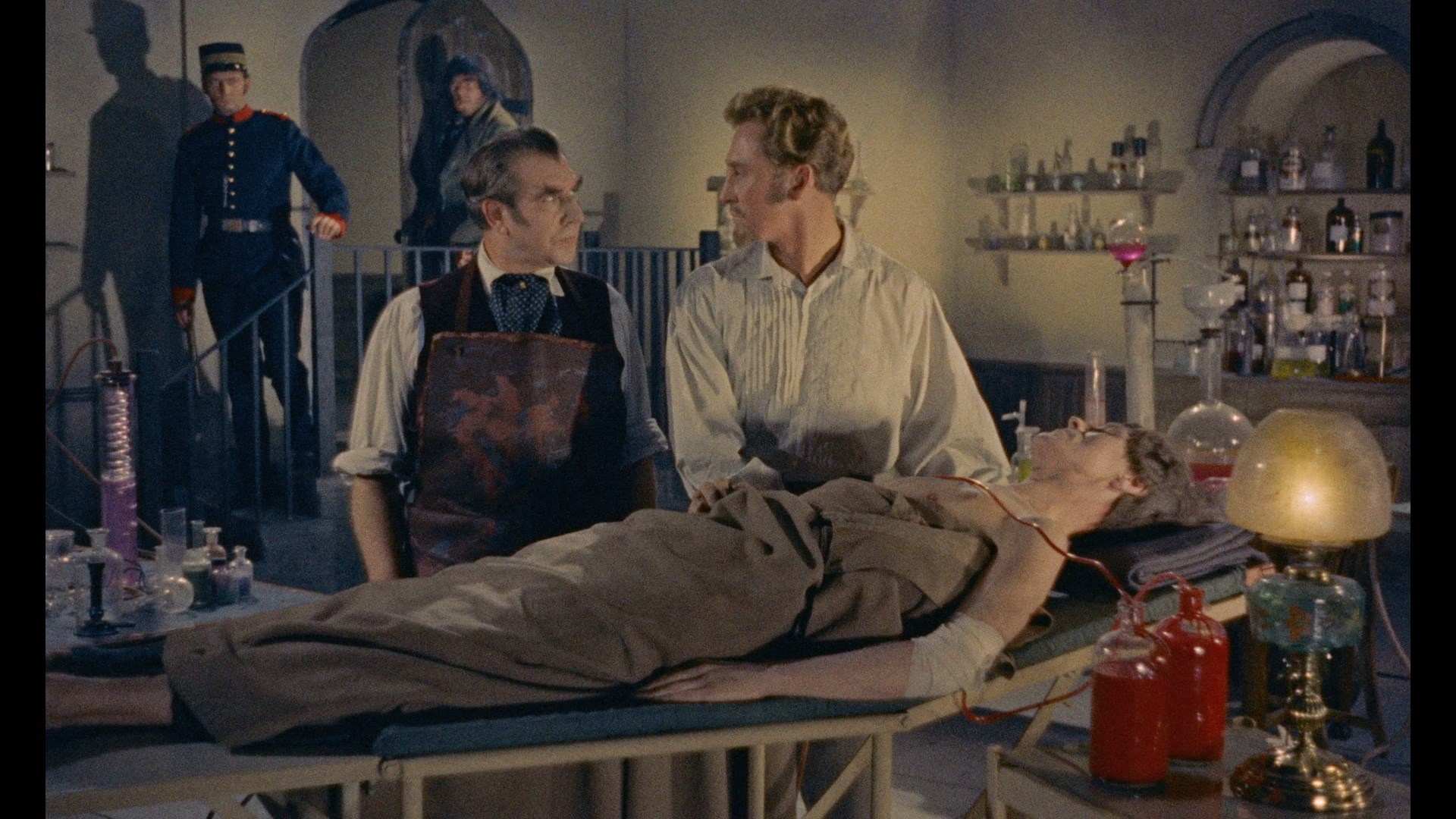 detective-style role here. The usual Baker and
detective-style role here. The usual Baker and 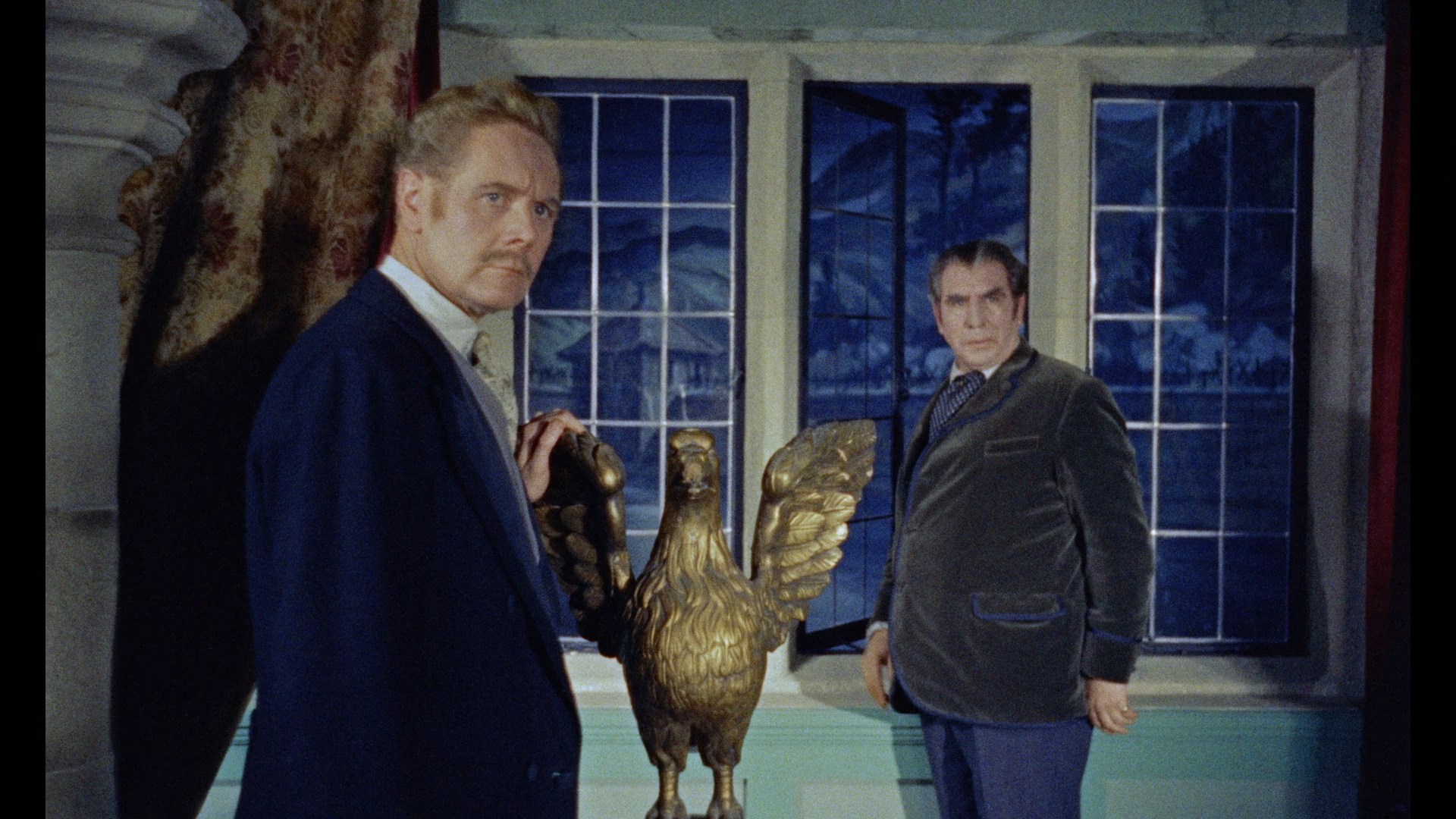 Berman personnel are all here giving it that familiar feel including composer Stanley Black, who was very busy at the time doing plenty of non-Hammer horrors.
Berman personnel are all here giving it that familiar feel including composer Stanley Black, who was very busy at the time doing plenty of non-Hammer horrors. 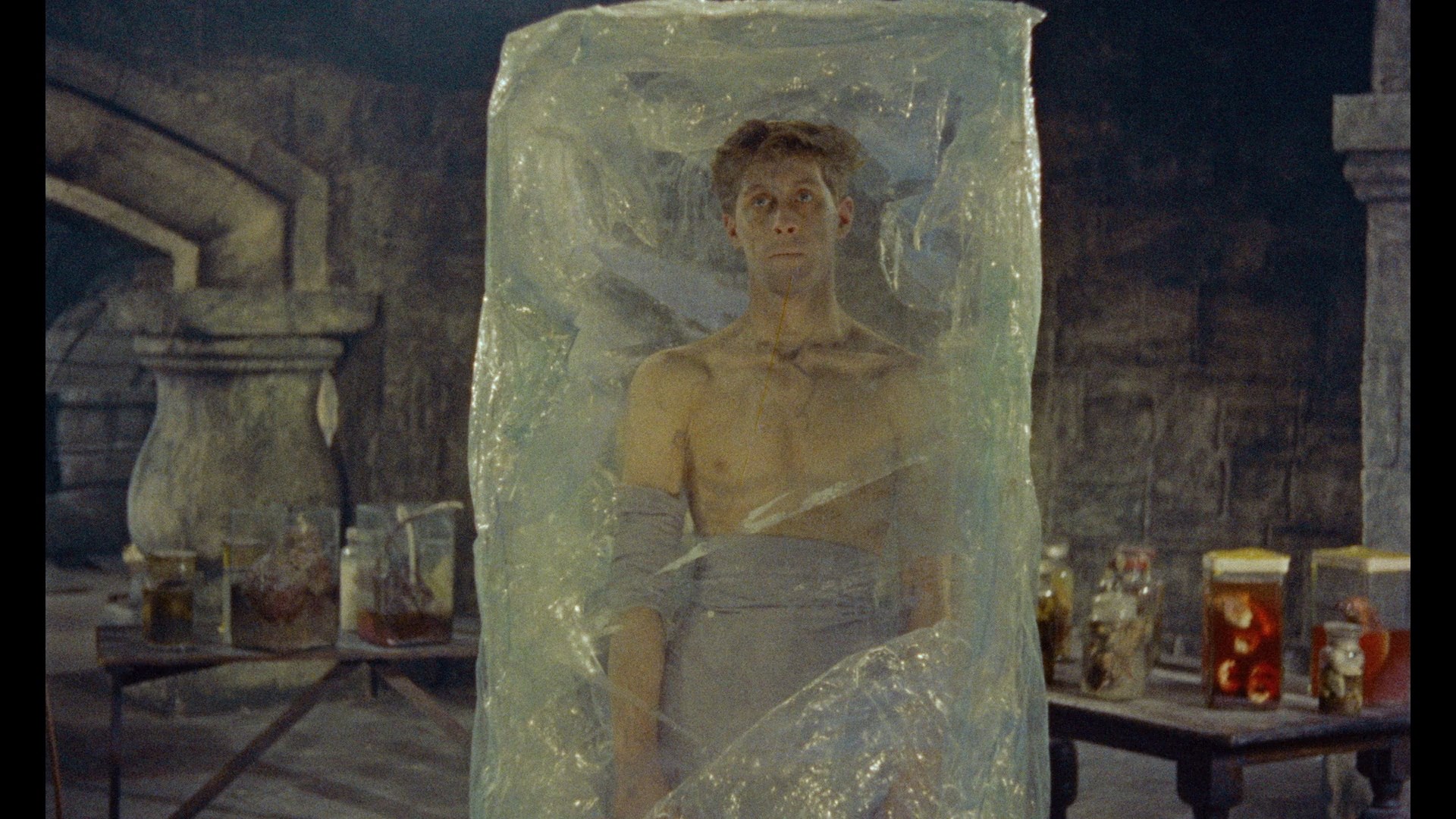 Sangster's script. Rigby also turns up on camera for two separate featurettes starting with "He Begins Where Dracula Left
Sangster's script. Rigby also turns up on camera for two separate featurettes starting with "He Begins Where Dracula Left  Off" (47m10s), an analysis of the film's place in the British Gothic horror pantheon, the moral panic that erupted over domestic films around that time inciting a "horror habit," and the legacy of this and other films on the genre in both popular culture and film scholarship. Then in "Sangster and the Censor" (20m44s) Rigby specifically addresses the BBFC's extreme animosity to Sangster and the irritated notes it gave about this film with extensive details about what had to be trimmed to get the seal of approval. He also explains what's been put back in this version (including what's only in the Nucleus) while also detailing some other material lost to the ages. The theatrical trailer is followed by an entertaining 28m27s Barbara Shelley trailer reel including Cat Girl, The End of the Line, The Camp on Blood Island, this film, Village of the Damned, The Shadow of the Cat, Postman's Knock, The Gorgon, Dracula, Prince of Darkness, Rasputin the Mad Monk, Quatermass and the Pit, and Ghost Story. Also included are the quite different French and Italian credits (3m52s) sourced from tape, a 2m21s look at the Italian Malia Fotoromanzo magazine, a huge 6m37s gallery of lobby cards, posters, and promotional photos, and a very amusing 1993 Dr. Terror's Vault of Horror BBC TV intro (2m) for an airing paired up with I Don't Want To Be Born.
Off" (47m10s), an analysis of the film's place in the British Gothic horror pantheon, the moral panic that erupted over domestic films around that time inciting a "horror habit," and the legacy of this and other films on the genre in both popular culture and film scholarship. Then in "Sangster and the Censor" (20m44s) Rigby specifically addresses the BBFC's extreme animosity to Sangster and the irritated notes it gave about this film with extensive details about what had to be trimmed to get the seal of approval. He also explains what's been put back in this version (including what's only in the Nucleus) while also detailing some other material lost to the ages. The theatrical trailer is followed by an entertaining 28m27s Barbara Shelley trailer reel including Cat Girl, The End of the Line, The Camp on Blood Island, this film, Village of the Damned, The Shadow of the Cat, Postman's Knock, The Gorgon, Dracula, Prince of Darkness, Rasputin the Mad Monk, Quatermass and the Pit, and Ghost Story. Also included are the quite different French and Italian credits (3m52s) sourced from tape, a 2m21s look at the Italian Malia Fotoromanzo magazine, a huge 6m37s gallery of lobby cards, posters, and promotional photos, and a very amusing 1993 Dr. Terror's Vault of Horror BBC TV intro (2m) for an airing paired up with I Don't Want To Be Born.